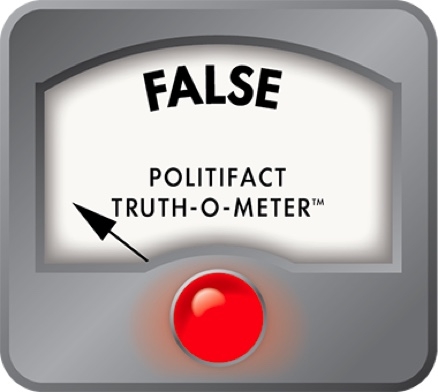Dear Madam Speaker: (Dear Madam President:)
I am pleased to submit to Congress, pursuant to subsections 123 b. and 123 d. of the Atomic Energy Act of 1954, as amended (42 U.S.C. 2153(b), (d)) (the “Act”), the text of the agreement to extend the agreement for cooperation between the United States and the Republic. South Africa Regarding the Peaceful Uses of Nuclear Energy (“Treaty”). I am also pleased to submit the written approval, authorization, and determination of the Treaty and the Nuclear Proliferation Assessment Statement (NPAS) of the Treaty. In accordance with section 123 of the Act, a classified annex to the NPAS, prepared by the Secretary of State, in consultation with the Director of National Intelligence, summarizing the relevant classified information, will be submitted to Congress itself. A joint memorandum submitted to me by the Secretaries of State and Energy and a letter from the Chairman of the Nuclear Regulatory Commission expressing the views of the Commission are also enclosed. Addendum to the NPAS contains a comprehensive analysis of the export control system of the Republic of South Africa on nuclear issues, including interactions with other countries concerned with proliferation and actual or suspected nuclear, dual use, or missile-related transfers to such countries, according to section 102A(w) of National Security Act of 1947 (50 U.S.C. 3024(w)), being submitted separately by the Director of National Intelligence.
The agreement has been negotiated in accordance with the Act and other applicable laws, and will be executed once the Republic of South Africa completes the necessary domestic process and authorizing such implementation. In my judgment, it meets all applicable statutory requirements and will further the nonproliferation and foreign policy interests of the United States of America.
Agreement extending for 4 years the Agreement on Cooperation between the United States of America and the Republic of South Africa Concerning the Peaceful Uses of Nuclear Energy, done at Pretoria on August 25, 1995 (“1995 Agreement”), which will expire on December 4, 2022. The 1995 Agreement contains all the necessary provisions by subsection 123 a. of the Act. It provides a comprehensive framework for peaceful nuclear cooperation with the Republic of South Africa based on their mutual commitment to nuclear nonproliferation. It allows the transfer of materials, equipment (including reactors), components, and information for nuclear research and nuclear power production. It does not permit the transfer of Restricted Data and does not permit the transfer of sensitive nuclear technology unless otherwise provided by amendment. Low-enriched uranium can be transferred for use as reactor fuel and in reactor experiments, and small amounts of specialized nuclear material, including plutonium and high-enriched uranium, can be transferred for use as samples, standards, detectors, targets, and for other purposes . as the parties can agree. Through the 1995 Agreement, the United States committed itself to endeavoring to take the necessary and practicable steps to ensure a reliable supply of nuclear fuel to the Republic of South Africa.
In the event of termination or expiration of the 1995 Agreement, the key nonproliferation and control conditions will continue in effect as long as any material, equipment, or components subject to the 1995 Agreement remain in the territory of the party concerned or under its jurisdiction or control. anywhere, or until such time as the parties agree that such materials, equipment, or components can no longer be used for any nuclear activity relevant from a safeguards perspective.
The Republic of South Africa is an advocate for the peaceful use of nuclear technology and a global leader on disarmament issues. Prior to joining the Treaty on the Non-Proliferation of Nuclear Weapons (NPT) in July 1991, the Republic of South Africa had a fully developed nuclear weapons program. Shortly after complying with the NPT, Pretoria submitted an initial nuclear material inventory declaration to the International Atomic Energy Agency (IAEA), which included all material from its dismantled nuclear weapons. In March 1993, Pretoria publicly acknowledged the existence of its nuclear weapons program (something it was not legally required to do) and subsequently cooperated with the IAEA to review the full changes. The Republic of South Africa has entered into a Comprehensive Safeguards Agreement and Additional Protocol with the IAEA. As a uranium producer and commercial nuclear power generator, the Republic of South Africa is an active member of the Nuclear Suppliers Group and continues to take into account international nuclear safety and security requirements in its own domestic nuclear policy. A more detailed discussion of the Republic of South Africa’s domestic civilian nuclear activities and its nuclear nonproliferation policies and practices is provided in the NPAS and its classified annexes.
I have considered the views and suggestions from the departments and agencies interested in reviewing the agreement and have determined that its performance will promote, and will not constitute an unreasonable risk to, public defense and security. Accordingly, I have approved the agreement and authorized the implementation and urged that Congress give favorable consideration.
This delivery must be a delivery for the second purpose of subsection 123 b. and 123 d. of the Law. My administration is prepared to begin direct consultations with the Senate Foreign Relations Committee and the House Foreign Affairs Committee, as provided in subsection 123 b. After completing 30 days of continuous review session provided for in subsection 123 b., 60 days of continuous review session provided for in subsection 123 d. will start.
Sincerely,
JOSEPH R. BIDEN JR.
Treaties are agreements between and among nations. Agreements have been used to end wars, settle land disputes, and even stabilize new countries.
What is the difference between executive agreements and treaties quizlet?
What is the difference between an agreement and an executive agreement? The difference between an agreement and an executive agreement is that an agreement is a formal agreement between two or more sovereign countries and an executive agreement is a pact between the president and the head of a foreign country or their subordinates.
What is an executive agreement quizlet? executive agreement. See the article : What Trump took from us. an agreement between the United States and a foreign government that is less formal than a treaty and is not subject to the constitutional requirement for ratification by two-thirds of the US Senate.
What is the difference between executive agreement and a treaty?
Treaty: An international agreement that received the advice and consent of the Senate and ratified by the President. Executive Agreement: An international agreement that is binding, but which the President enters into without receiving the advice and consent of the Senate.
What is one way that executive agreements differ from treaties quizlet?
What is one way that executive agreements differ from treaties? The treaty requires approval by two-thirds of the Senate; an executive agreement is not. This may interest you : The US needs a better strategy to stop Iran.
What is one way that executive agreements differ from treaties *?
What is one way that executive agreements differ from treaties? The agreement was negotiated by the President; executive agreement by senators. Executive agreements remain valid from one administration to another; no agreement. See the article : The Netflix limited series A Man in Full rounds out the main cast with six new additions. The treaty requires approval by two-thirds of the Senate; an executive agreement is not.
Who does America have a treaty with?
The US created the North Atlantic Treaty Organization (NATO) with Canada and Western Europe in 1949. In 1951, it signed a Security Treaty with Japan as well as one with Australia and New Zealand (ANZUS), followed in 1953 by Mutual Defense. Treaty with the Republic of Korea (ROK), all of which remain to this day.
Who are America’s treaty allies? Some examples of alliances in the United States include NATO – North Atlantic Treaty Organization (with 28 other countries), NORAD – North American Aerospace Defense Command (with Canada), ANZUS – Australia, New Zealand. and the US Security Treaty, and the Moroccan-American Treaty of Friendship â which …
How many treaties does the US have?
The United States enters into more than 200 treaties and other international agreements each year. The subject of the treaty covers the entire spectrum of international relations: peace, trade, defense, territorial boundaries, human rights, law enforcement, environmental issues, and many others.
How many countries does the US have treaties with?
The United States has free trade agreements in force with 20 countries.
What is the power of executive agreements?
Executive agreements are legally binding international agreements negotiated by the president. Unlike treaties, Congress does not advise or consent to executive agreements. Executive agreements are authorized by the president’s foreign relations powers, as established by the US Supreme Court case vs. Belmont.
What are two examples of executive agreements? Most of all international agreements have been in the form of executive agreements. These include important trade agreements such as the North American free trade agreement (NAFTA), the Canadian Free Trade Agreement, and the World Trade Organization (WTO).
Is executive agreement formal power?
To carry out foreign policy, the president has also signed executive agreements with other countries that do not require Senate action. The Supreme Court ruled that this agreement was within the inherent powers of the president.
Are executive agreements implied powers?
Another power is also implied by the ability to receive ambassadors. For example, they can also make an executive agreement, which is very similar to a pact, but does not require the approval of the Senate. Executive orders are also generally issued that affect foreign policy and international relations.
What are executive agreements?
Executive Treaty: An executive treaty is an international treaty entered into by the President, pursuant to the constitutional or statutory authority of the President, without the advice or consent of the Senate.



